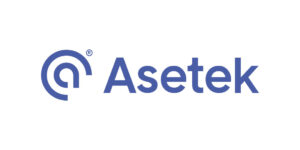Fra Zerohedge
Last week we posted the report by ADM ISI’s Paul Mylchreest “Dollar Liquidity Threat is Getting Critical and the Fed is M.I.A” which summarized some of the key points in the ongoing, second phase of global dollar shortage, profiled here first in the start of 2015 and validated recently by the BIS. We discussed the bitter (and all too predictable) irony that the Federal Reserve doesn’t “get it”, having recently declared that that liquidity in financial markets was “adequate.”
It isn’t.
More than 68,000 hits later, we suspect that many ZH readers are tracking the dollar liquidity crisis (and Fed ignorance) via the negativity in Cross Currency Basis Swaps (CCBS). The 3-month Yen/Dollar CCBS has made a new low of 81.75 bp (swapping Yen into dollars for 3 months costs 81.75bp annualised above covered interest parity) implying that the structural dollar shortage is deteriorating.
While we’ve been writing about dollar shortages since the GFC, Mylchreest traced the timeline of the current shortage back to the first RMB devaluation in February 2014. He noted that it’s the one thing that even the central banks struggle to control… think Swiss Franc peg (SNB), impact on carry trade and the Yen (BoJ) and the severe weakness that we’re seeing in the RMB (PBoC). Indeed, a “glaring omission” is the failure of the Fed to set-up a dollar swap arrangement with the PBoC.
Mainstream economists and media are playing catch-up. For example, Carmen Reinhart referenced the “dollar shortage” last month, as did Bloomberg, citing a new report by former Fed economist Zoltan Pozsar which summarizes everything we have said for years.
In his latest “Global Money Notes” report, “From Exorbitant Privilege to Existential Dilemma”, Credit Suisse’s Zoltan Pozsar argues that “an FOMC determined to normalise interest rates has no choice but to become a Dealer of Last Resort in the FX swap market and provide qunatitative Eurodollar easing (“QEE”) for the rest of the world through its dollar swap lines.”
According to Pozsar, Basel III and the money market reforms are tightening dollar funding markets causing an “existential trilemma” for the Fed in which “it is impossible to have constraints on bank balance sheets (restraining capital mobility in global money markets), a par exchange rate between onshore dollars and Eurodollars, and a domestically oriented monetary policy mandate. Something will have to give. It’s either the cross-currency basis, the foreign exchange value of the dollar or the hiking cycle. It’s either the Fed’s regulatory and monetary objectives, or control over the Fed’s balance sheet size. It’s either quantities or prices…”
In terms of CCBS, Pozsar expects “Cross-currency bases will have to go more negative before the Fed steps in, and -150bp on the three-month dollar-yen basis is not an unlikely target”, which would probably lead to a severe bout of Yen weakness from here. The three month dollar-euro basis swap has declined to -43.9bp, closing in on its recent low of -58.8bp during the Deutsche Bank panic nearly two months ago. As an aside, it’s telling that fears about European banks still cause a scramble for dollar liquidity in a deja vu all over again.
Pozsar, like Mylchreest, highlights how a dollar funding crisis tightens monetary policy for the rest of the world and could shred the RMB as it means “tighter financial conditions for the rest of the world. In turn, tighter financial conditions point to slow, not faster global growth as foreign banks pass on higher costs to their customers or worse: de-lever their books…If the Fed leaves the intermediation of all of the rest of the world’s marginal dollar needs to American bank’s constrained balance sheets, offshore financial conditions may tighten and the dollar may strengthen to the point where they are no longer consistent with the path envisioned for the funds rate: rounds of RMB devaluation would follow which also won’t help interest rate normalization.”
So, the rest of the world is left to hang around, waiting to see if the Federal Reserve wakes up to what’s happening to dollar liquidity, and the threat it poses to the global economy and to its own (glacially slow) tightening cycle.
And now that they may be finally catching on, we would like to see some economists or journalists sit Janet Yellen down and interrogate her about dollar funding markets. Although we doubt that they could extract a confession, it might be entertaining to watch
Læs her om Cross Currency Basis Swap
As demand for dollar funding has increased the euro dollar basis swap rate has fallen sharply and has become strongly negative. In a concerted move to make dollar funding available to European banks several central banks (the Federal Reserve in the US, the Bank of England, the Swiss National Bank and the Bank of Japan) have now stepped in and offered to act as swap counterparty in cross-currency basis swaps at EURIBOR + 0.5%. However the euro swap rate continues to fall just as it did during the credit crisis in 2008/2009 driven by growing demand for dollars and European banks’ growing difficulty obtaining dollar funding. This graph shows the one year EURUSD cross-currency basis swap rate. We are not too far away from the rate seen after the collapse of Lehman in 2008 when the swap rate fell below -1.2%. Usually the rate is measured in units called basis points (bp) where 1 basis point is 0.01%.









